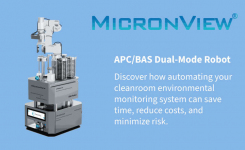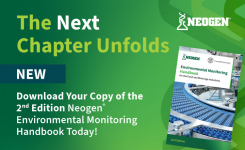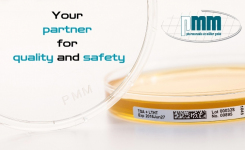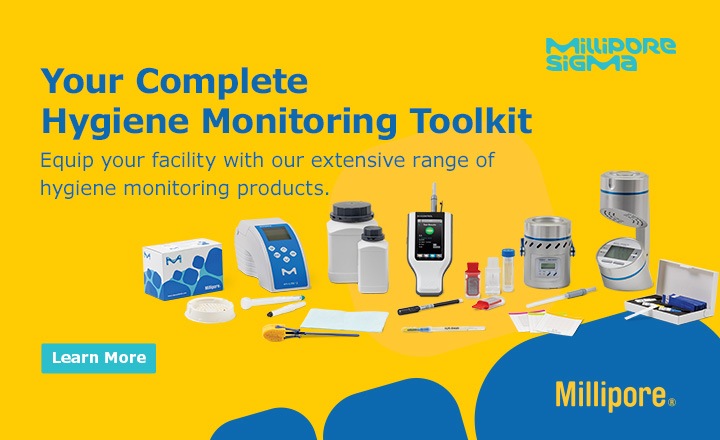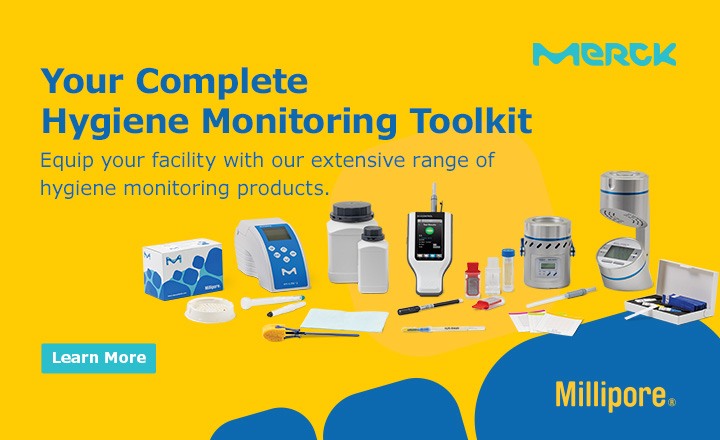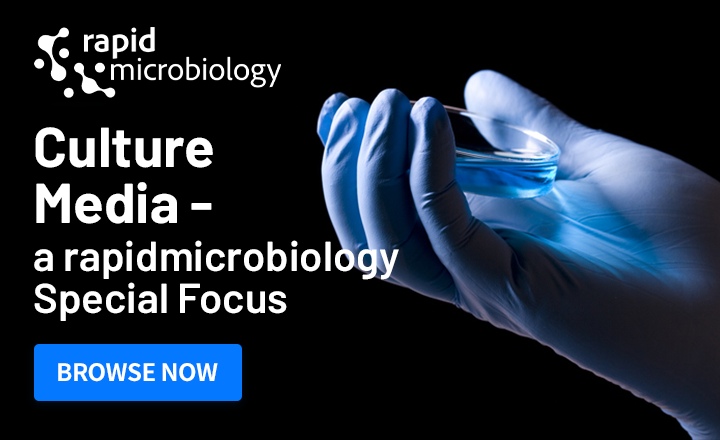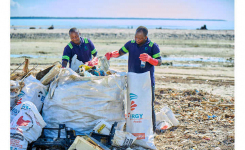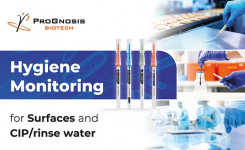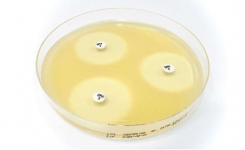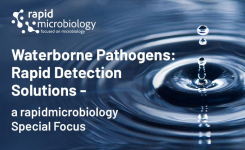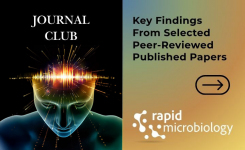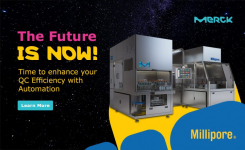Key Points:
- SARS-CoV-2 is shed through feces into wastewater which can then be tested using qPCR and NGS platforms
- Surveillance of SARS-CoV-2 in wastewater allows for non-invasive localized mass screening
- Sampling should be done at peak times, i.e., morning and evening
- It is advised to perform a normalization of SARS-CoV-2 concentration using human fecal indicators
- Rapid in-Field/On-Site Test methods require minimal training, save time and money, and can be very useful for surveillance of localized/targeted and high-risk areas, i.e., nursing homes, hospitals, work-sites, etc.
Introduction:
SARS-CoV-2, the virus that causes COVID-19, passes through the human body into stool (feces) and ends up in sewage at wastewater treatment plants (WWTP). Samples are taken from the influent/raw sewage at the WWTP, concentrated, and the extracted RNA is then tested for the presence of SARS-CoV-2 RNA. This allows public health departments to obtain SARS-CoV-2 surveillance data that they can correlate with clinical testing results. In addition, this data facilitates:
- a supplementary analysis on the accuracy of the clinical SARS-CoV-2 tests
- vaccination effectiveness tracking
- the regional targeting of vaccination campaigns
- a pro-active testing strategy, i.e., can show as an early warning signal of another wave
- detection of new and emerging variants
National and regional health departments around the world are performing the surveillance of SARS-CoV-2 in wastewater. The majority of these samples are taken from the WWTP influent, as advised by national authorities. (Click here for US CDC National Wastewater Surveillance System or click here for EU Recommendation)
For surveillance of high-risk areas such as nursing homes and hospitals or for targeted/localized campaigns like work-sites and college campuses/dormitories, rapid test methods are very effective in providing real-time, high-quality data. These mobile tests provide a complete kit (the size of a briefcase) – from concentration to gold-standard qPCR results, can be performed with minimal personal training, and don’t require a biosafety lab.
Sampling Wastewater for SARS-CoV-2/COVID-19
The size of the sample taken will depend on the concentration/extraction method used, with typical sample sizes can ranging from as large as 6L down to 1ml. One-time “grab” samples can be collected from wastewater by using a bag-mediated filtration system (BMFS), for example, where a 6L bag is used to scoop out a sample of water, then placed on a tripod to allow gravity to bring the sample through a filter, collecting any viral particles present.
Automatic 'composite' samplers can collect wastewater aliquots periodically over a 24-hour period to give a better representation. In an EU recommendation on the surveillance of SARS-CoV-2 and its variant, published in March 2021, the European Commission told member states that to ensure results are reliable and comparable, a composite sampler should be used over a 24-hour period. 'Passive sampling' involves the deployment of a device in a waterbody for a known period of time and can be done using cheap materials such as adsorbent swabs/medical gauze, etc.
SARS-CoV-2 Concentration and Extraction Methods for Wastewater
Rapid, efficient (high recovery), and cost-effective virus concentration methods are needed to monitor SARS-CoV-2 and its nucleic acid in untreated wastewater samples for the successful application of water-based epidemiology for COVID-19 surveillance. Concentrating wastewater samples can improve the detection of SARS-CoV-2 RNA, and there are several different approaches that yield adequate recovery for SARS-CoV-2 detection in wastewater. These include:
- Ultrafiltration - this involves high-speed centrifguation.
- Filtration through an electronegative membrane with sample pre-treatment by addition of MgCl2 or acidification – This method is currently being used for the national poliovirus surveillance in Japan. This method has requires many steps
- Polyethylene glycol (PEG) precipitation – A common method used to concentrate viruses from water matrices
- Skim milk flocculation
- Ultracentrifugation
If time and cost are a limiting factor, there's also the option of skipping these steps and moving straight to extraction. Using magnetic binding bead technology, for example, it is possible to extract SARS-CoV-2 from solids and liquids, which means that the SARS-CoV-2 molecular detection test used will be looking for viral RNA in both water and solids. As there’s more SARS-CoV-2 in solids than liquids, a method that looks at both types of samples for viral RNA will improve the accuracy of the result. The extraction of nucleic acid using magnetic beads in routine microbiology testing labs has become a popular approach due to being easily automated and the high quality and quantity of RNA in the resulting extract. As it doesn’t require the extra time-consuming concentration steps, this extraction technology has been adopted by manufacturers of rapid/on-site/in-field mobile test kits.
Nucleic Acid (RNA) Extraction Methods:
Silica columns, magnetic beads, and precipitation.
Human Faecal indicators:
Human fecal indicators are used to normalize the concentration of SARS-CoV-2 in wastewater, i.e., to know for sure that an increase in recovered SARS-CoV-2 RNA is from the increased transmission and not from a rise in population numbers e.g.vacation. These indicators can be organisms, viruses, or enzymes specific to human feces. Some examples currently in use are the pepper mild mottle virus (PPMV), crAssphage (a bacteriophage found in high-quantities in the human gut), RNASP, and cytochrome B.
Rapid Test Methods/Mobile Laboratories for in-Field/On-Site testing of SARS-CoV-2 in Wastewater
Rapid test methods for wastewater surveillance of SARS-CoV-2 are easy-to-use and require no special training/qualification for the in-field/on-site technician. By reducing the number of steps normally required for wastewater testing, the mobile kit can have a better recovery of SARS-CoV-2 RNA from the sample, as holding times are reduced, thus providing a faster high-quality result. These mobile kits remove the laborious pre-concentration steps mentioned previously, such as PEG or electronegative membrane filtering, by using a smaller sample and magnetic bead-binding technology. They also include a gold-standard qPCR instrument and can allow a run of anywhere up to 15 samples simultaneously.
Both the US CDC and World Health Organization (WHO) say there’s little or no evidence of an infectious SARS-CoV-2 virus in water. However, operators should use standard practices, practice basic hygienic precautions and wear PPE when operating test kits. These rapid kits include a reagent to inactivate the virus and solutions to wash any impurities from the beads that might inhibit the PCR reaction. The molecular targets for these kits are conserved regions of the genome that aren’t normally changed during mutation events. To detect new and emerging variants, these kit providers offer remote-testing services to the customer, where samples can be sent to their labs for sequencing.
SARS-CoV-2 Detection from Wastewater samples:
According to the centers of disease control and prevention in the US and Europe, primers and probes targeting regions of the SARS-COV-2 N (N1 and N2, US CDC) and E genes (ECDC) are sensitive and specific for quantifying SARS-CoV-2 RNA in wastewater.
RT-qPCR: This is the gold standard in SARS-CoV-2 testing. However, if the assay is designed to detect the S-gene only, it might give false negatives if variants are present in the sample. It is therefore recommended to use a test that has two targets to minimize any false negatives. Using a multiplex qPCR assay that can determine the level of each variant in the sample.
Digital Droplet PCR (ddPCR): This is an extremely accurate test that can give exact viral copy numbers. A 1-step RT-ddPCR protocol is advantageous for wastewater because RT is performed in individual droplets, which can reduce RT inhibition compared to RT in bulk solution, as in a 2-step process and in RT-qPCR. (Source: CDC)
NGS: Results can be difficult to interpret if there are several infections currently circulating in the community. However, sequencing is currently the only method that can identify new variants. Sequencing of wastewater is revealing valuable information, not just on SARS-CoV-2, but also other circulating viruses and pathogens and the human microbiome in general.







